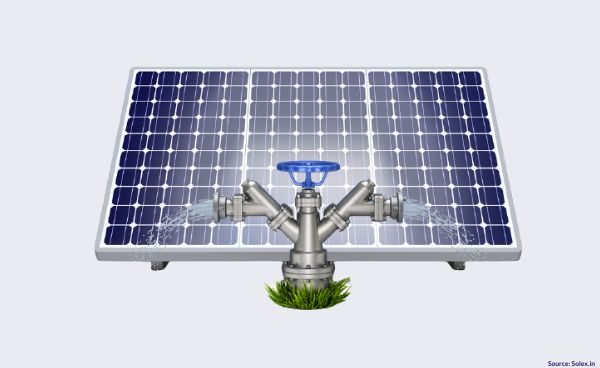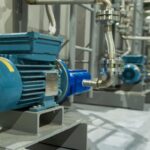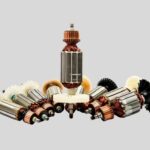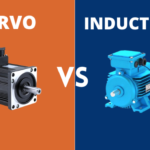What is a Solar Water Pump?
The solar water pump is a socially and environmentally attractive technology to supply water. Especially if the need for water is in remote areas that are beyond the reach of power lines, electricity, solar power is often the economically preferred technology.
A solar water pump system is essentially an electrical pump system in which the electricity is provided by one or several PhotoVoltaic panels or solar panels .
A typical solar-powered pumping system consists of
- Solar Array or Photovoltaic panels
- Solar Pump controller
- Water pump or Submersible pump or Surface pump
The water is often pumped from the ground or stream into a storage tank that provides a gravity feed, so energy storage is not needed for these systems.
1. Solar Array
A solar array is a collection of multiple solar panels that generate electricity as a system.
2. Solar Pump Controller
The purpose of the Solar Pump controller is,
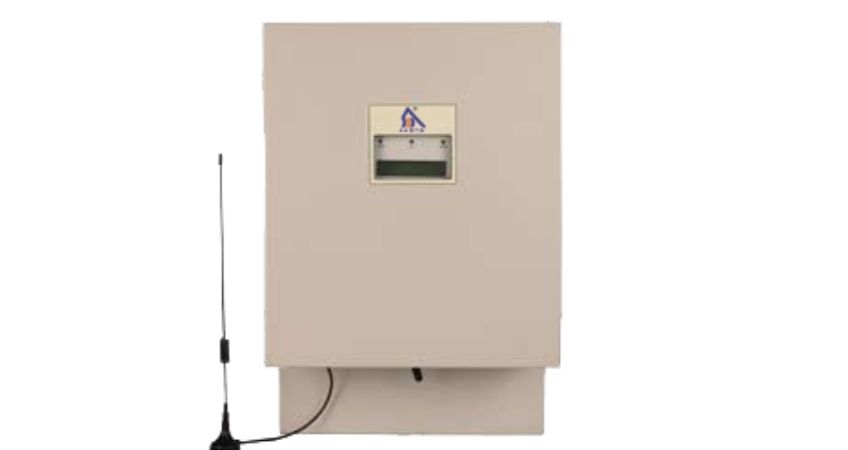
- It matches the output power that the pump receives with the input power available from the solar panels.
- A controller usually provides low voltage protection, whereby the system is switched off if the voltage is too low or too high for the operating voltage range of the pump.
- It will increase the lifetime of the pump thus reducing the need for maintenance.
- Other ancillary functions include automatically shutting down the system when the water source level is low or when the storage tank is full.
- It will regulate water output pressure, blending power input between the solar panels and an alternate power source such as the grid or a petrol generator.
- Remotely monitoring and managing the system through an online web portal offered as a cloud service by the controller manufacturer.
How Solar Water Pump Work?
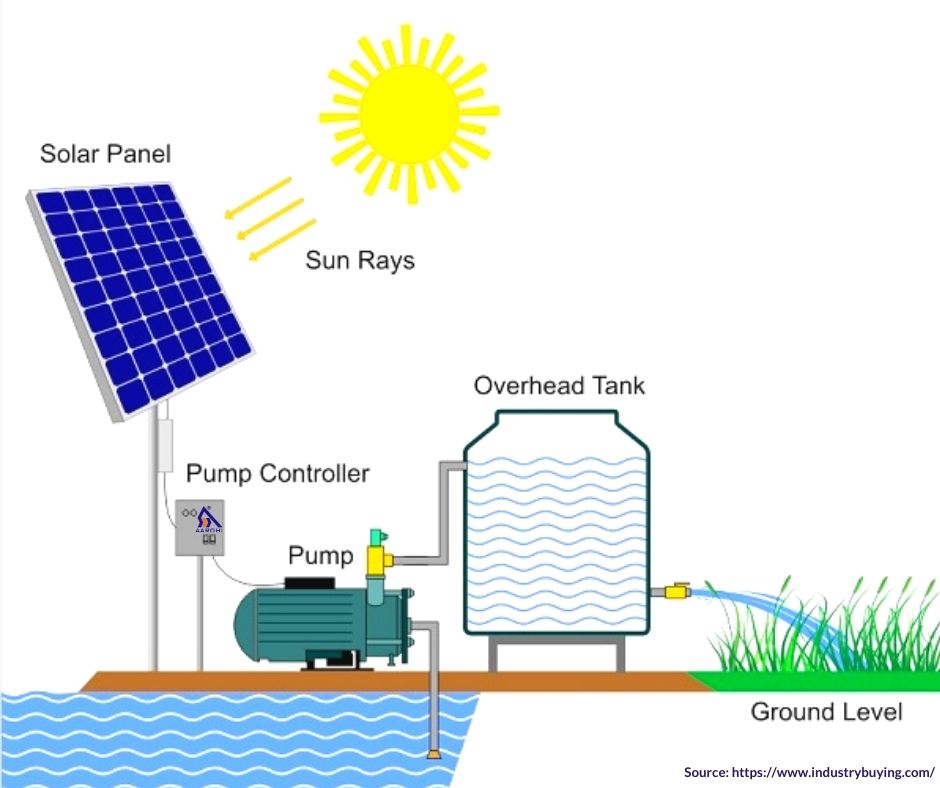
It works like any other pump set with the only difference being the solar energy used instead of nonrenewable energy for its operation.
When sunlight falls on the solar panels it produces direct current (DC) which then feeds the motor to pump out the water.
However, in the case where the motor requires an alternating current (AC), the DC produced by solar panels is converted to AC using an inverter.
Solar Water PumpTechnologies
There are two main types of solar water pump technologies:
1.The centrifugal pump
which uses high speed rotation to suck water in through the middle of the pump. Most conventional Alternating Current (AC) pumps use such a centrifugal impeller.
However, when operating at low power the performance of the pump drops dramatically. This makes centrifugal pumps less suitable for solar applications, since low power due to cloudy weather is to be expected.
2. The positive displacement pump
which usually uses a piston to transfer water. Many solar water pumpts use the positive displacement pump, which brings water into a chamber and then forces it out using a piston or helical screw.
These types generally pump slower than other types of pumps, but have good performance under low power conditions and can achieve high lift. Since PV is expensive and is an intermittent power supplier, solar pumps need to be as efficient as possible.
Efficiency of the pump is measured in the amount of water pumped per watt of electricity used.
Types of Solar Pump
There are several different types of solar-powered pumps depending on how they have been classified.
But primarily there are four types of solar water pumps-
- Submersible pumps
- Surface pumps
- Direct current (DC) pumps
- Alternate current (AC) pumps
Submersible pump
As the name suggests, a submersible pump is located deep below the ground level and remains submerged under water.
The suction head of the submersible pump is beyond a depth of 10 metres.
The installation of these pumps is done by digging a borewell, which leads to an increase in its installation and maintenance cost.
Surface Pump
The surface pumps remains out of water and in the open. They are installed where the water table is within a depth of 10 metres.
As they need to be on the surface, these pumps are easier to install and maintain.
DC Pump
This pump runs on a motor which operates on direct current, therefore no battery or inverter is needed in this type of pump.
AC Pump
The motor of this pump operates on alternating current, which means the direct current produced by the solar panels gets converted to AC using the inverter. The conversion from DC to AC leads to loss of power from generation and consumption.
Advantages of Solar Pump
Advantages of Solar Pumps are listed below
- Low maintenance
- No fuel costs or spills
- Easy to install
- Simple and reliable
- Unattended operation
- The system can be made to be mobile
Disadvantages of Solar Pump
Disadvantages of solar pumps are listed below
- Potentially high initial costs
- Lower output in cloudy weather
- Must have good sun exposure between 9 AM and 3 PM
The Conclusion
If you are thinking or considering the applications of solar energy for agriculture, the benefits are numerous.
With the ability to pump water for irrigation during dry and sunny weather in regions that need it most, panels like these can be easily installed and enable the pumps to work in wells of very low yields, offering a longer lifespan and plenty of energy in the long run.

